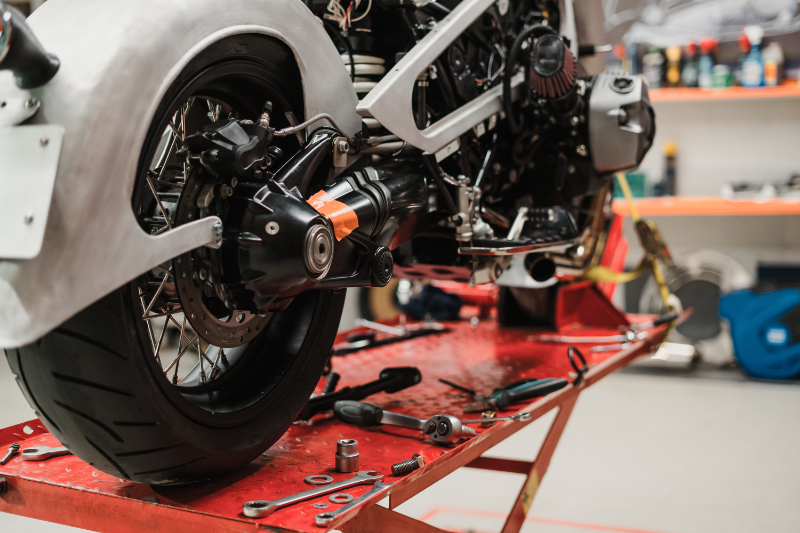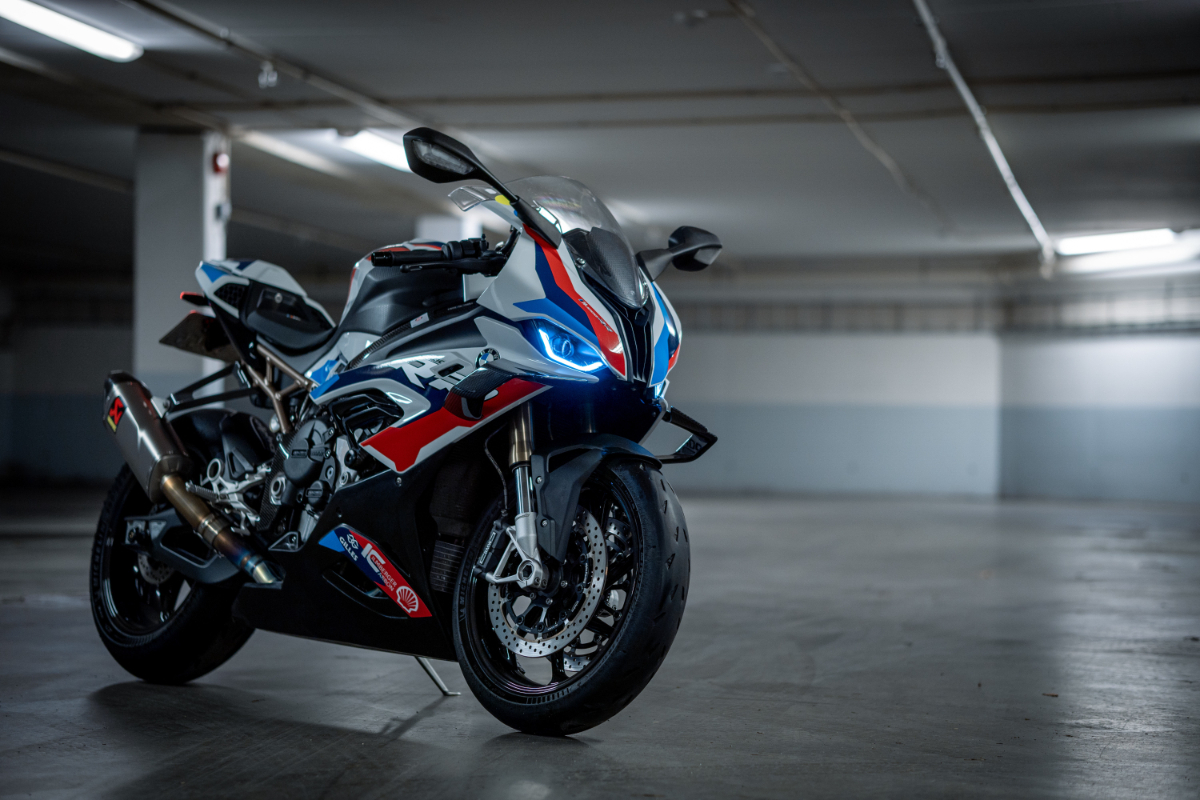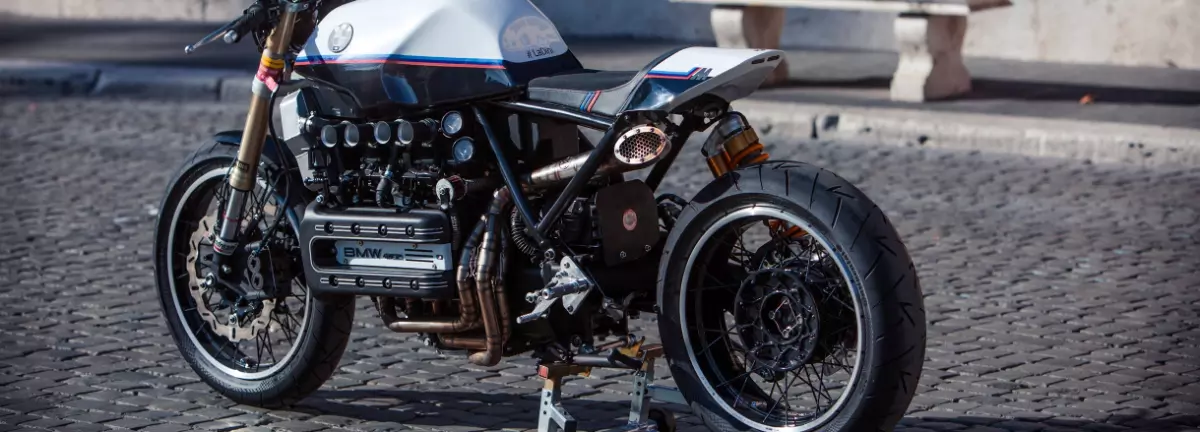How often should I get a motorcycle servicing? This article looks at the importance of motorcycle servicing and how to tell when your next maintenance service is required.
How Often Should You Service A Motorbike?
"How often should you maintain a motorcycle?" is a difficult question to answer because it varies from bike to bike. Some bikes, for example, are designed for long-term performance and efficiency, while others are designed for speed; hence, the answer to how often you should maintain a motorcycle depends on the function of your bike.
In general, you should take your bike to a service centre every six months or so - a running bike goes 2,500-4,000 miles on the road every six months on average. Most service centres, however, recommend servicing and maintaining your bike at least once a year.
There are several advantages to repairing your bike. For example, a properly maintained bike provides you confidence in your bike's dependability; moreover, it assures that your bike will serve you well for the rest of its life.
What Are The Benefits Of Servicing A Motorbike?
A bike service comprises inspecting the components and restoring them to top condition through replacement or repair. A well-maintained bike serves the owner well for the duration of its life, and there are no doubts about its dependability and durability - most motorcycle manufacturers recommend doing a periodic service every 3000 miles.
While the chain, air filter, electricals, and engine oil are serviced at each visit, items such as sprockets, brake pads, bearings, and brake shoes are dealt with later. Most mass-market motorcycles, and even some luxury models, require general preventative maintenance every three months if used infrequently.
If the bike has comprehensive service records, the owner has an advantage when selling it. Buyers will be ready to pay a premium only for the bike's condition, and with frequent service, the risks of unexpected breakdowns and part failures are greatly reduced. In reality, one feels complete peace of mind when riding the bike, which shapes the user's perception of the bike's dependability.
Why are Motorcycle Services Important?
A thorough motorcycle service will guarantee that any mechanical or electrical issues are resolved before your MOT and, of course, before they jeopardise the safe functioning of your motorcycle.
Regularly repairing your motorbike will not only extend its life, but it will also be more efficient and enjoyable to ride when all of its components are in good working order.
When you take care of your bike, it will take care of you, giving you many hours of entertainment. If you're a seasoned rider, you understand how critical motorcycle maintenance is to safety and performance.
A lot is riding on your motorbike - most notably your life - so it's well worth the time, money, and effort to keep it in peak shape. While various bikes require different maintenance, many aspects of bike maintenance are universal.
Mechanically inclined individuals who are intimately acquainted with their motorcycle may be content to perform servicing and maintenance on their own, but in an era when motorcycles are becoming increasingly sophisticated and frequently necessitate the use of specialised diagnostic tools, the majority of us will head to a motorcycle service centre.
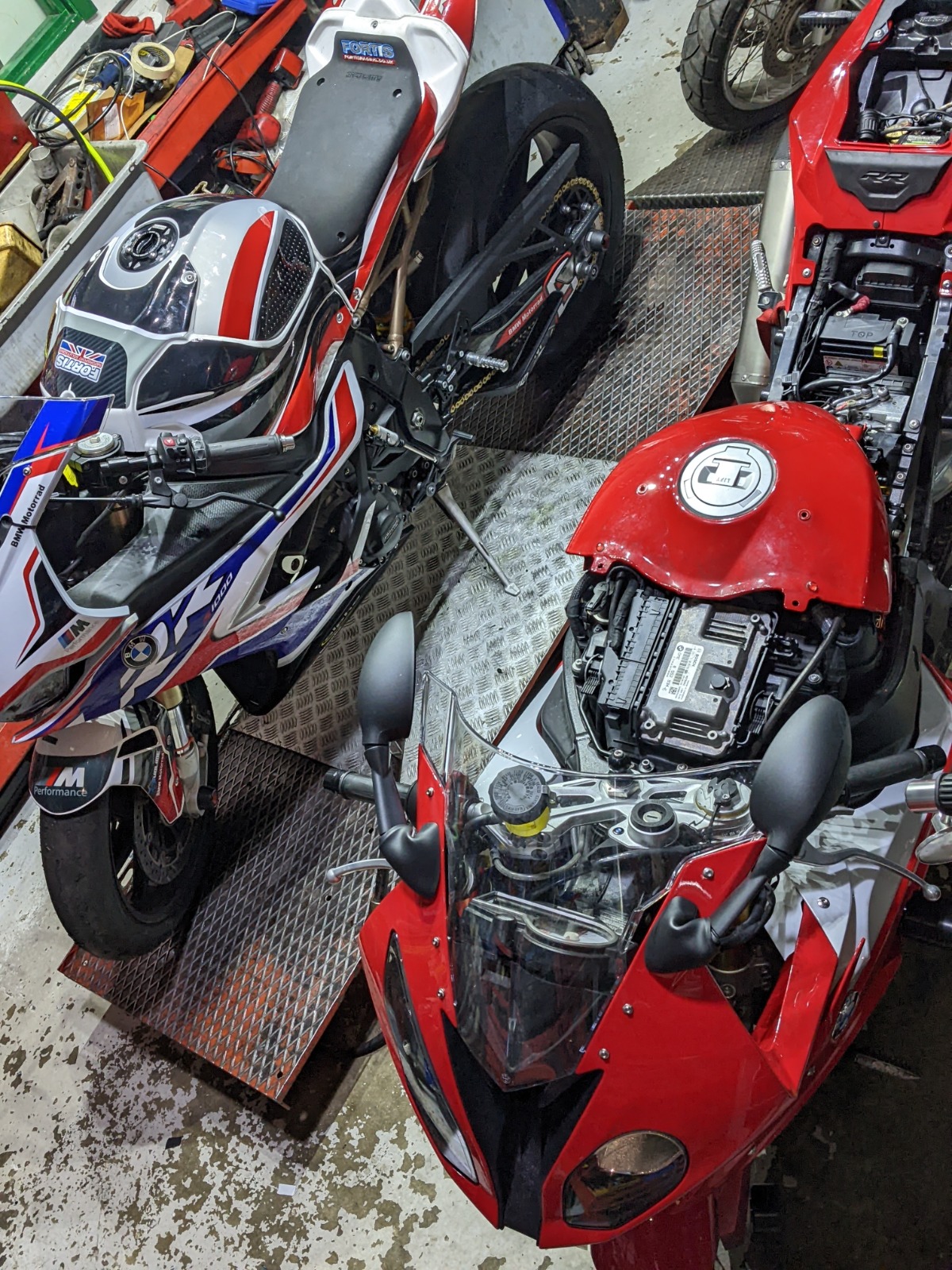
Factory-authorised outlets may charge a bit more than an independent shop, but they also have factory-trained technicians who will know your specific model and its quirks and will use genuine factory parts that were specifically produced to meet your bike's needs, and maintain a factory service history will also help preserve your motorcycle's resale value, unless you plan on keeping it forever.
You're connected to the road by two small contact patches the size of your palm - tyres are a must-have; make sure they're inflated to the exact pressures as recommended by the maker of your bike and check them frequently.
Over- or under-inflated tyres may cause your bike to perform poorly, affecting grip and handling, and tyres should have greater tread depth than the required minimum. The tyres should be in good condition, with a well-rounded profile and tyres that have died, cracks in their sidewalls, or a 'scalloped' and uneven wear pattern must all be replaced
What Does A Motorbike Service Package Include:
Interim Maintenance Service Package
The most fundamental sort of service is an interim service, and as you'd expect from a six-month programme, the inspections and updates are centred on day-to-day driving. Along with brake, tyre, steering, suspension, and fluid checks, you also receive an oil change and oil filter replacement. When deciding whether to schedule an interim service, consider how many miles you travel each year.
If your mileage is higher than the national average - presently 7,400 miles per year - it's essential scheduling an intermediate service every six months to keep your car operating smoothly.
Be sure to consider the kind of journeys you take, short excursions are bad for your automobile because they don't enable the engine oil to heat up.
So, if you make a lot of short trips, an oil change and filter replacement are required to prevent lasting engine damage. Remember that an interim service should never be used in place of a complete service; they work together to maintain your car in good repair and avoid future failures.
Annual Maintenance Service Package
An annual motorcycle maintenance service includes an inspection of the bike, which includes checking for worn fork seals, the condition of the tyres, the tightness of all the fasteners, and even structural damage to the chassis. Maintenance items like brake pads, chains, and sprockets may also need to be replaced during this inspection.
Major Maintenance Service Package
A major service, which includes a comprehensive service as well as a highly thorough inspection and servicing of your motorcycle's components, may be offered by some facilities. For instance, a thorough motorcycle service would involve flushing the hydraulic system and removing and cleaning the brake callipers.
Full Maintenance Service Package
A service includes an inspection of the bike, which includes checking for worn fork seals, the condition of the tyres, the tightness of all the fasteners, and even structural damage to the chassis. Maintenance items like brake pads, chains, and sprockets may also need to be replaced during this inspection.
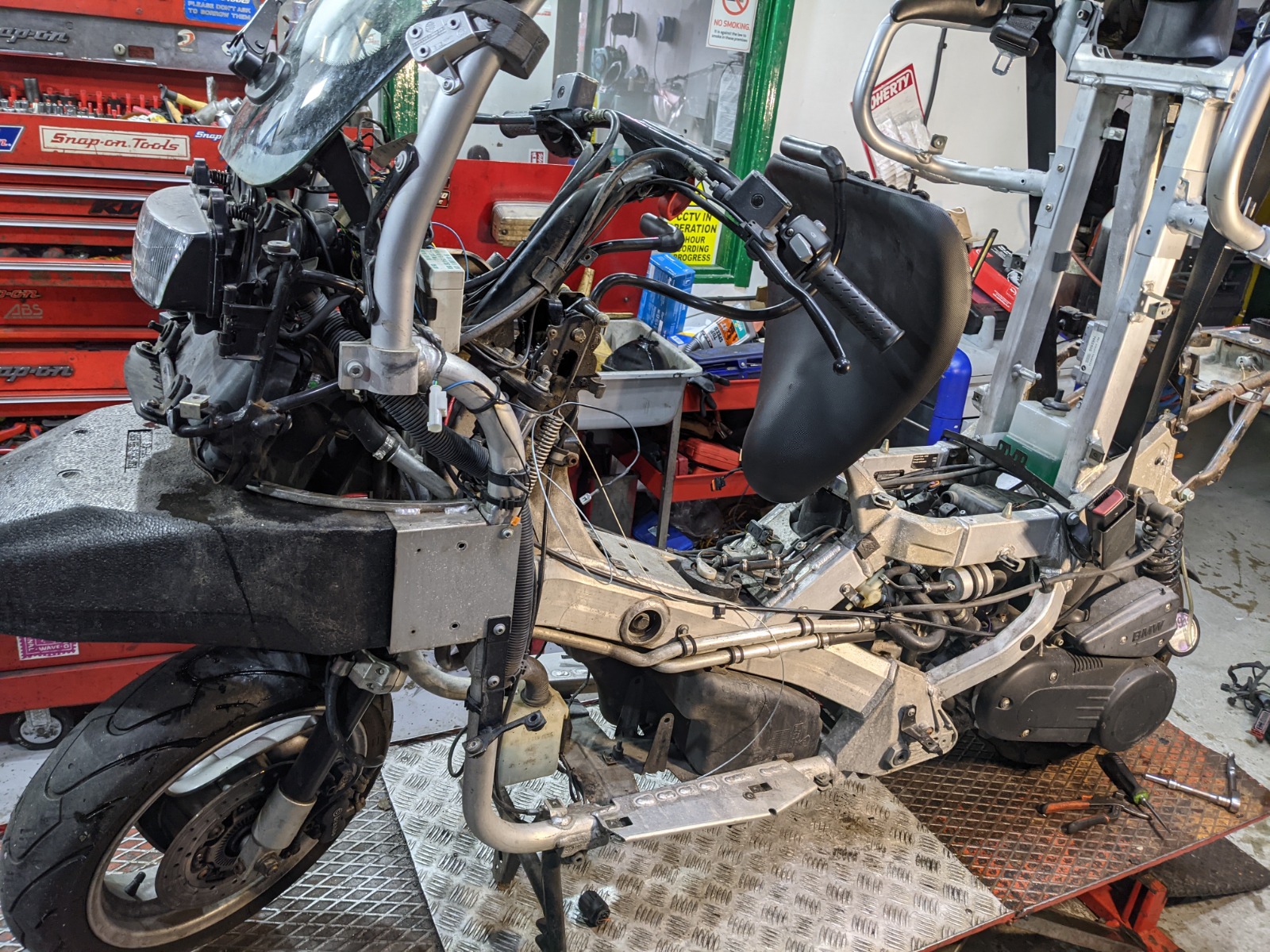
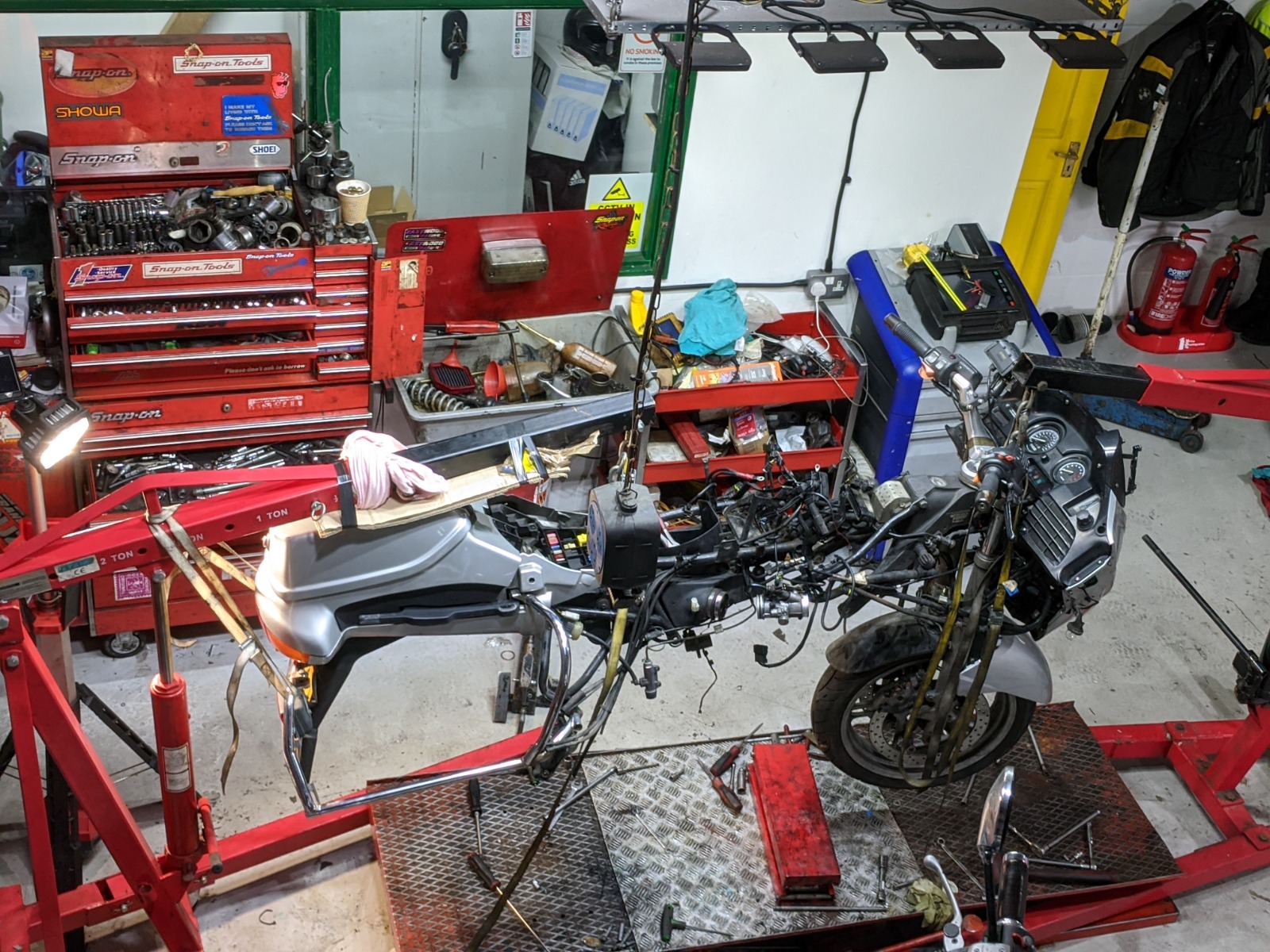
What are the Different Motorcycle Servicing Options?
When it comes to motorcycle servicing, you have three options: a complete service, an interim service, and, in certain cases, a considerable service.
What constitutes a full motorcycle service varies slightly from garage to garage, but in general, a full motorcycle service should identify and address any issues that may jeopardise the safe operation of your machine; with motorcycle servicing, a full service will include a road test to ensure the motorbike is running as expected.
Garages also provide interim checks, which are less detailed than complete services but nevertheless guarantee the key components of your motorcycle are running properly. An interim motorcycle service, as the name implies, should keep your bike in good condition in between complete maintenance.
Some garages may provide a major service, which is a comprehensive service plus a more extensive inspection and servicing of your motorcycle's components, such as removing and cleaning brake callipers and flushing the hydraulic system.
The price of a thorough motorcycle service is determined by the size of your engine and the particular pricing of your preferred garage.
Motorcycle servicing expenses may be lower at an independent garage than at a garage that is part of a countrywide or regional chain, because the latter has higher running costs for things like marketing and city centre business rates, and chains, unlike some small garages, must pay VAT.
The worth and cost of your mileage have undoubtedly crossed your mind. The quick answer is that a bike with 25,000 miles that has received regular maintenance will likely serve you considerably better than one with 10,000 miles that have only ever had its chain cleaned It will comfort the potential buyer that you are a responsible person who has done your utmost to ensure the bike has had the greatest life possible if you can present a service book with annual stamps.
When it comes to price, basic motorcycle maintenance typically costs approximately £125, while a truly comprehensive service on a rare or exceptional bike might cost up to £750. Motorcycles with 125cc engines or smaller cost far less overall; if you have a pretty conventional bike, such as a Suzuki SV650, with easily accessible components and extensive local expertise, you may expect to pay anywhere from £125 to £550 in total, depending on the type of repair you want.
Most motorcycle services and repairs can be made and completed in a single day, and because many garages provide weekend services, you won't be without your bike for very long if you use it as your primary mode of transportation during the week. Additionally, some garages also provide courtesy bikes if you're going to be without them for a while. If it's a complete service or the mechanic detects something that needs urgent repair, they might want to hang onto it for a few days.
What Motorbike Service Maintenance Can You Do On Your Own?
While it is best to have a professional do a comprehensive service on your motorcycle, there are certain fundamental motorbike maintenance jobs you can do yourself, such as topping up or changing the oil, checking and changing the battery, lubricating your bike, and ensuring your chain is adjusted.
To maintain your engine working smoothly, you should replace the oil every few thousand miles; first, ride the bike for approximately five minutes to warm it up. This reduces the viscosity of the oil, making it simpler to drain. With the engine turned off and the bike upright, remove the drain and oil fill plugs, allowing the oil to flow into a drain pan.
Furthermore, remove the oil filter - this may be a nasty procedure, so cover the engine and exhaust section with aluminium foil to prevent drippage. Install a new oil filter, replace any removed parts, and refill with a funnel and the right amount and kind of motorcycle oil, as instructed in the owner's handbook.
Replace the oil fill cap and dispose of spent oil at a bike shop or municipal facility. The performance of your motorbike will suffer if the air filter, which keeps particles out of the engine, is blocked and unclean.
Changing an air filter is not a difficult process, but it may be time-consuming. Sometimes the air filter is easily accessible, but you may have to remove the gas tank and other pieces to get to it; once inside the air box, remove and replace the air filter, then reinstall whatever you removed. Locate the valve stem on the inside of the wheel, remove the cover, and place an air pressure gauge on the valve stem.
Compare the pressure to what it should be - the information will be inscribed on the tire's sidewall. Then, using an air compressor, fill the tyre to the exact amount of pounds per square inch (PSI); if you over-inflate, let some air out. Replace the valve stem cap when finished, and to verify the tread, check the tire's wear indicator; if the knob is at the same level of rubber that contacts the road, it's time to replace the tyre.
In order to reach the coolant drain bolt, all necessary bodywork should be removed. After positioning a drain pan beneath the engine and removing the bolt, everything should drain properly. After the procedure is complete, reconnect the drain bolt, use a funnel to add the required amount of coolant to the system, reinstall the radiator cap, and replace any removed bodywork.
Before shutting off the engine, switch it on and give it some time to warm up. Check the coolant level after removing the radiator cap, and add additional coolant if required to reach the owner's manual's recommended level.Nowadays, most chains have O-rings, which require less cleaning than older chains with unsealed links. You should clean your chain when it gets particularly dirty, or at the recommended mileage in your owner's manual.
When you do, raise your bike's rear wheel and shift into neutral to make moving the chain easier. Rotate the back wheel while applying specially designed chain lubricant to the chain after cleaning it with a soft bristle brush. The chain should be uniformly coated in order for the lubricant to reach the joint through the O-rings. After letting the chain sit for five minutes, remove any extra lubricant using a paper towel.
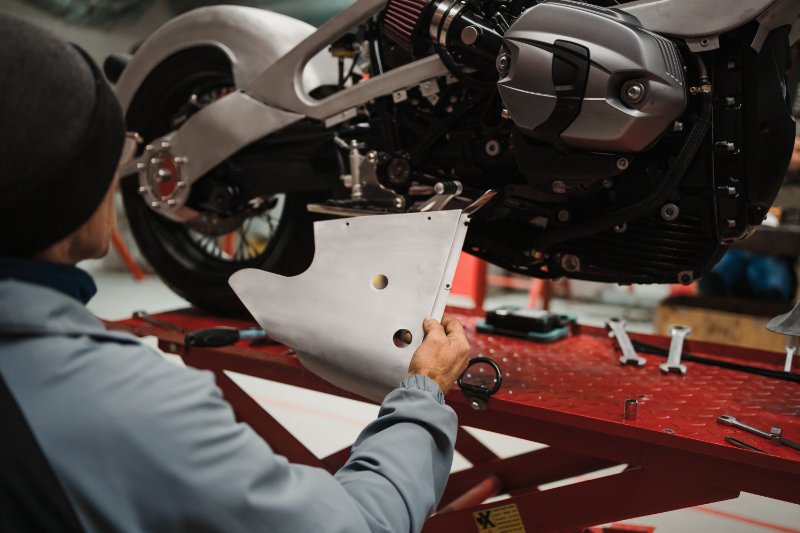
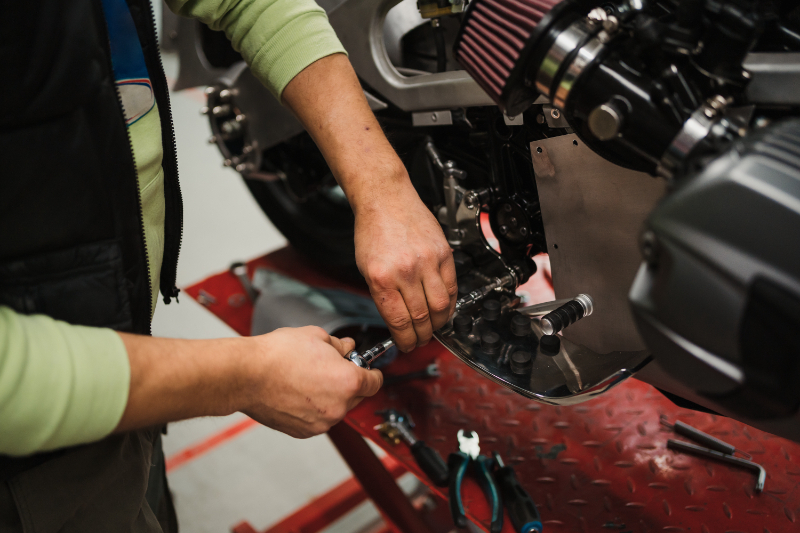
Jap & German Motorcycles provides the best BMW motorcycle services in and around West London. Whatever you require, our team can assist you with everything from BMW motorbike repairs to providing motorbike spare parts.

